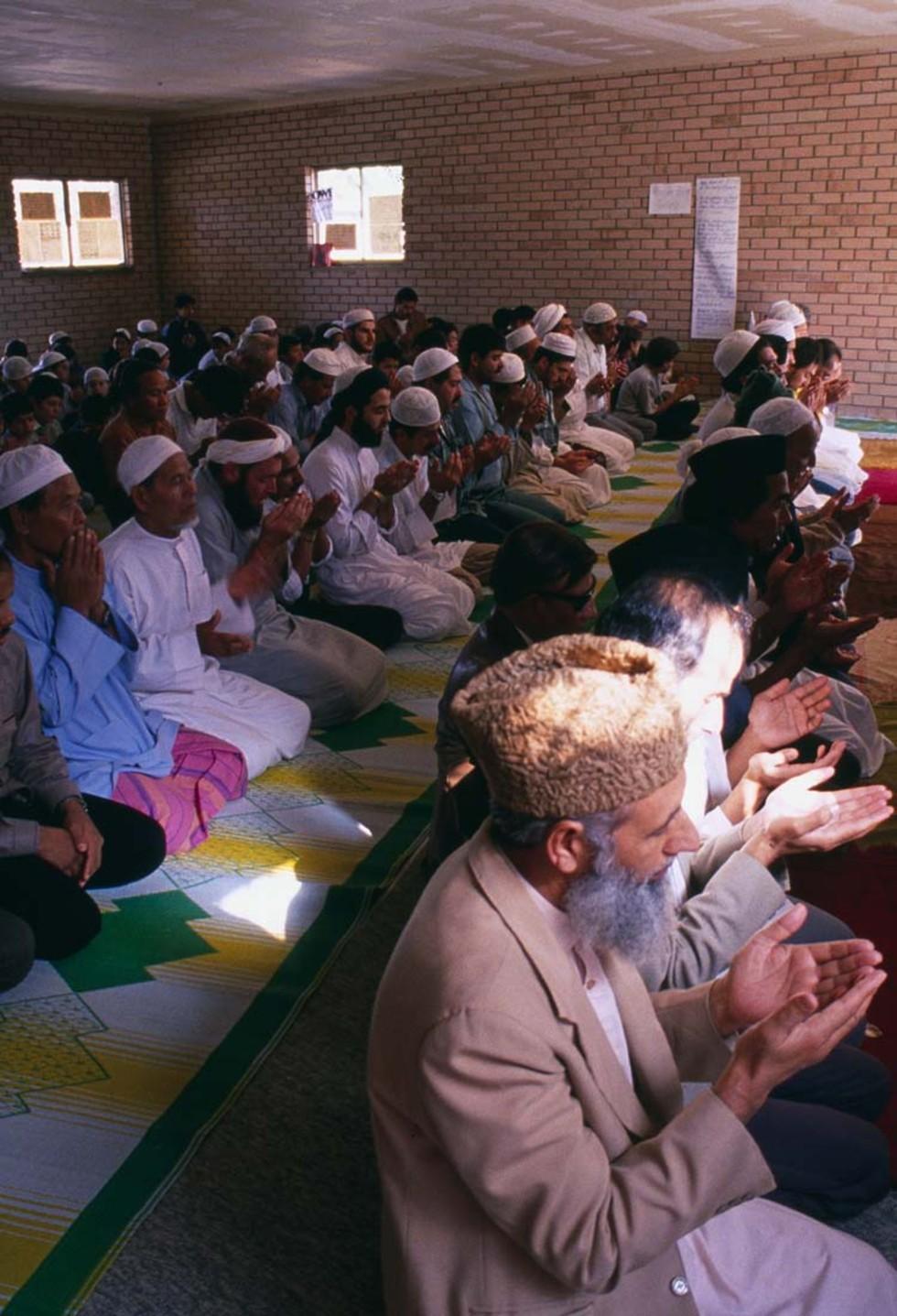


About this record
This colour photograph shows male members of the Muslim community at prayer in a suburban mosque in Perth, Western Australia. Men are shown kneeling in rows on prayer mats with their hands upturned in prayer and submission to Allah (God in Arabic). The room is unadorned. It has a concrete floor and brick walls.
Educational value
- Devout Muslims usually pray five times a day. The specific time of each prayer is determined by the position of the sun. In Australia, local mosques and some daily newspapers provide timetables listing prayer times. In Islamic countries the azan or call to prayer is made before each prayer time, reminding Muslims that they should interrupt their work and praise Allah.
- Daily prayers are one of the Five Pillars of Islam. The other Pillars or main requirements are reciting the Shahadah (declaration of faith stating that there is only one God and Muhammad is His Prophet); giving to charity; fasting between sunrise and sunset for 30 days during the month of Ramadan and making the pilgrimage to Mecca, the birthplace of Islam. Islam’s holy book is the Qur’an (or Koran), which was revealed to the Prophet Muhammad in the 6th century, in what is now Saudi Arabia.
- The imam leads the prayers in Arabic and there are set movements and postures. Before praying, Muslims perform wudu (ablutions), ritually washing the face, hands and feet to symbolically purify themselves before giving praise to Allah. During prayer, Muslims face the direction of Mecca, the spiritual home of Islam, in Saudi Arabia.
- For Muslims, prayer has special meaning if performed with a congregation, in that it serves to remind them that all humanity is one and everyone is equal in the sight of Allah. Muslims, if possible, should perform prayer with fellow Muslims as shown here. However, many Muslims pray privately at home or at work. The imam is not a clergyman, but the most learned member of the congregation and a scholar of the Qur’an and he leads the prayers.
- Friday is the Muslim holy day. Men are expected to attend the Friday communal prayer, called Jumma, at their mosque. Jumma includes reading verses from the Qur’an and a sermon. In Australia men and women have separate areas in the mosque for prayer services, although most women pray at home. Mosques are not adorned and do not contain statues or images.
- According to the 2006 Census there were 340,000 Muslims in Australia and of these about 30,000 lived in Western Australia. The 2001 Census indicates that Western Australia has the third-highest population of Australian Muslims (7 per cent), behind New South Wales (about 50 per cent) and Victoria (33 per cent). Since this photograph was taken in 1990, Western Australia's Muslim population has increased by around 60 per cent, including people from Pakistan, India, Malaysia, Indonesia, Somalia, South Africa, Turkey and Arabic-speaking countries.
Acknowledgments
Learning resource text © Education Services Australia Limited and the National Archives of Australia 2010.
Related themes
Need help with your research?
Learn how to interpret primary sources, use our collection and more.



